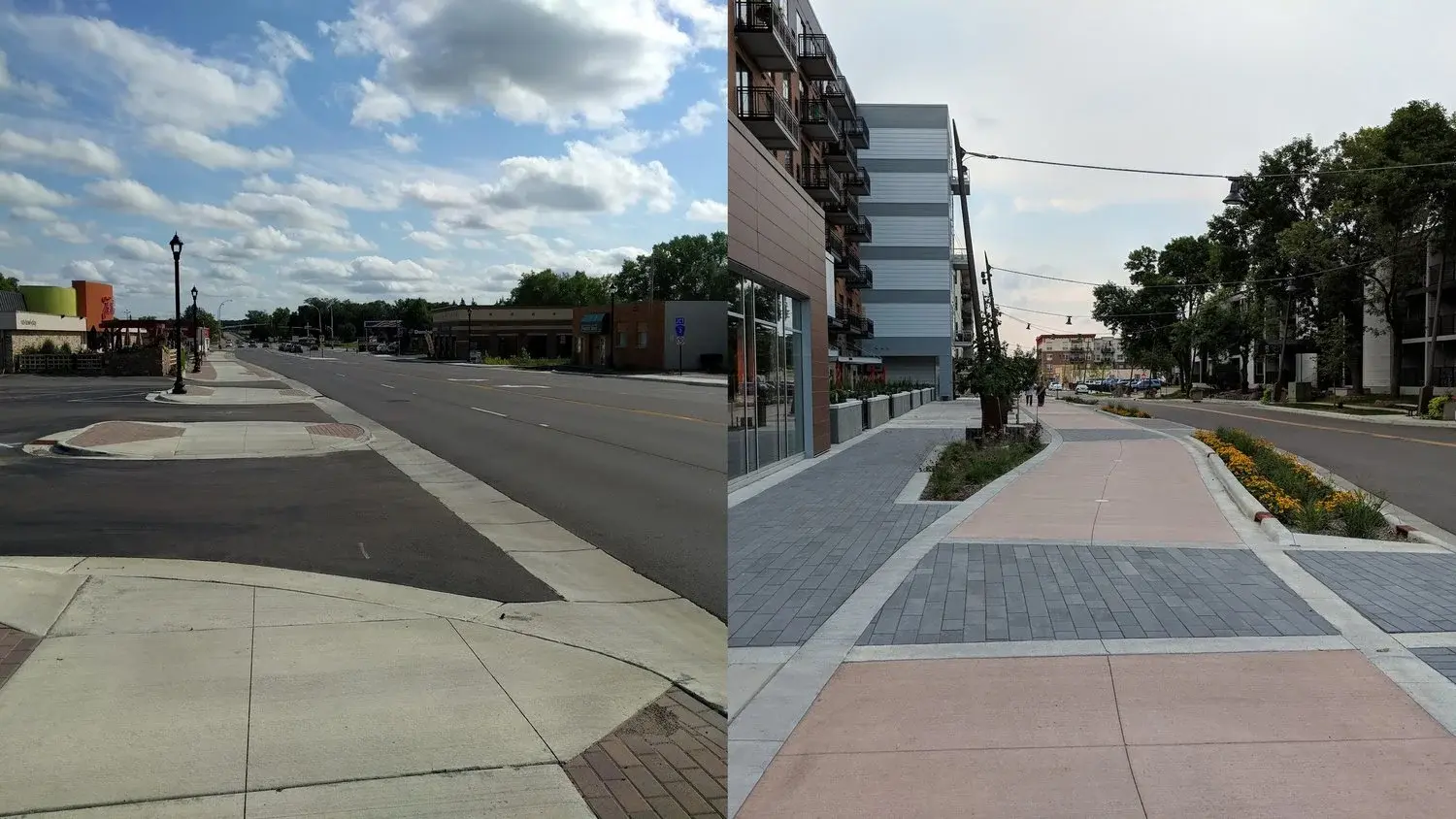Have you ever had a friend return from a vacation and gush about how great it was to walk in the place they’d visited? “You can walk everywhere! To a café, to the store. It was amazing!” Immediately after saying that, your friend hops in their car and drives across the parking lot to the Starbucks to which they could easily have walked.
Why does walking feel so intuitive when we’re in a city built before cars, yet as soon as we return home, walking feels like an unpleasant chore that immediately drives us into a car?



There’s definitely not just one thing about any given street that makes it pleasant or unpleasant.
Street widths do not matter, for example, if the urban design makes it such that there’s no need to cross the street. If the highway doesn’t bisect a community in the first place and there’s no compelling need to cross it, it affects nothing. Similarly, if there are pleasant and safe ped underpasses/road overpasses, the width still doesn’t necessarily matter (but ped bridges are almost universally terrible because they have to be SUPER high to account for large vehicles, making them awful to use).
Similarly, even a 2-lane road can be incredibly hostile to pedestrians. In my small city, we have a few major 1-way roads theoretically designed to get cars rapidly in and out of downtown. To make the roads “work better” they have no on-street parking, are somewhat wide (for the city) laned, and have limited stops (the few stops they do have are signaled). They are way too fast, considering they are residential roads lined with fairly dense historic houses. The sidewalks are somewhat narrow and tree canopy is poor, meaning if you’re on these sidewalks you’re pretty sun-beaten. No one local walks these roads. They go over a block or two to get in a less oppressive route.
edit- and to be clear, going over a block to a more ped-friendly route isn’t even necessarily a problem… if the route one or two blocks over was primarily for bikeped. Segregated modalities is a pretty good compromise for an old city like mine, with enough density to largely support it. But no, those routes are ALSO primarily for cars, they have just not been optimized quite as much.
I agree that even small streets can be pedestrian hostile. I live off of a road where most homes were originally .5-1 acre lots built in the early 1960s. Few of the original houses remain unchanged. Most have either been subdivided to build infill homes or torn down to build even more homes (think 3 or 4 SFH replacing 1).
The street design remains unchanged. Two lanes with no sidewalks and drainage ditches on either side of the road. The road is signed 25 mph but most drivers go 35-40 since it is straight and unimpeded for almost half a mile. Pedestrians must either walk in the street and hope drivers go around them or cross the road multiple times to find a flat surface not at the bottom of a 3 foot deep ditch. Since the city considers the road to be an important connector, they refuse to install speed bumps or other traffic calming. There has been a plan to build sidewalks for almost 25 years but it keeps getting pushed back since the project will require burying utilities, tons of fill dirt, and a rebuild of a bridge over a small creek.